Our Top Tips for First Time Flyers: Don’t let your nerves get the better of you!
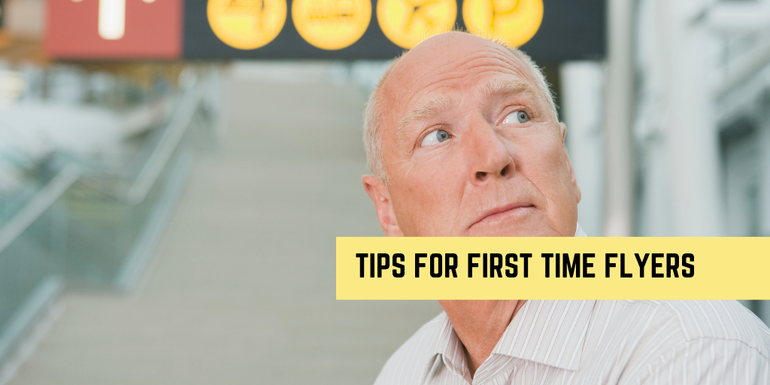
You’ve picked your destination, purchased your holiday essentials and booked your transfers – you’re ready to get away! But, are you flying for the first time? It’s a daunting thought, no matter what your age. What do I need to prepare? How will I know where to go? Will it be busy? What is the security process like and what can I take in my hand luggage? These are just some of the questions that will be running through your mind.
Don’t panic! We have put together a few helpful tips for first time flyers to prepare for your first trip to the airport and to (hopefully) put you at ease.
First Time Flying On A Plane Tips
- Before You Go: Research your destination and check-in for your flight
- Hand Luggage: Check your essentials are packed and familiarise yourself with carry-on rules
- Journey to the Airport: Arrange your transport well in advance
- Check your luggage at the airport: Leave plenty of time in case there’s a queue
- Security: Take out any electronics or liquids to be scanned separately
- In the departure lounge: Grab a coffee or do some shopping, but leave plenty of time to get to your gate
- On the plane: Store your hand luggage appropriately and keep your seatbelt fastened
- Landing: It can be bumpy, but make sure to relax and follow cabin crew instructions for disembarkment
Before you Go
Research your destination – If you are travelling somewhere exotic, make sure you know whether you need to have any vaccinations or need to have a Visa!
Most airlines will allow you to check-in before the date you fly – simply follow the steps in your email confirmation to log in, check your seats, add hold luggage if required and print your Boarding Pass. Sometimes, you can pick your seats for free if you check-in roughly 30+ hours before departure but it does vary for different airlines. So, we suggest you check with the airline directly. Most airlines now provide digital boarding passes, making travel easier for you as you’ll have everything in one place and you won’t have to worry about misplacing it.
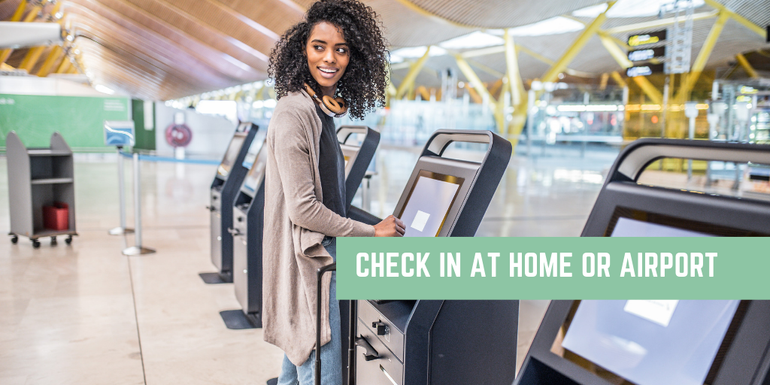
Having said that, some airports may not accept mobile boarding passes so be sure to double-check with the airport.
Top Tip: To make your flight as comfortable as possible, we suggest booking an ‘extra legroom’ seat if you are tall!
Essentials for Hand Luggage
Before you leave the house, ensure that your passport, boarding Pass, cash or cards and mobile phone are all in your hand luggage! At the time you checked in, you may have had the option to print a paper copy of your boarding pass, or to receive a mobile friendly version (usually a barcode) sent to you. If you opted for the latter, make sure you know where on your phone is!
Speaking of hand luggage, ensure you are familiar with restrictions in place when it comes to packing your carry on:

Check out our guides to packing hacks for ideas on how to pack light and travel with just your hand luggage for some packing inspiration!
Top Tip: If you are travelling with just hand luggage, check how many pieces you can take; some airlines allow the regular cabin bag, plus a small hand bag / laptop case or duty free bag, others will require that the cabin bag is the only piece allowed, so make sure there is room to put any extras in before boarding! Also, we hate to pick on them but they bring it on themselves. Ryanair will charge you for any bag bigger than a handbag or laptop bag so keep that in mind too!
Journey to the Airport
Arrange your transportation well in advance, especially if you need to book transport or hire a car at your destination. If you are driving, be sure to compare the prices of car parking at the airport – again, booking well in advance for the best deals!
Top Tip: The day before you travel, be sure to check any traffic reports on major roads – check for closures / diversions and plan accordingly.
Checking your luggage at the airport
If you are taking a large suitcase, this needs to be checked in when you get to the airport. Simply head to the check in desk for your airline which are usually located near the entrance to the airport and should be clearly signposted.
You will see rows of desks, with rows of queues to match, and above each desk they will display the airline and flight information for the flight that is being checked in. Locate yours and join the queue!
The attendant will take your luggage and weigh it – as long as it is under the weight allowance, it will then continue its journey to the plane.
Top Tip: Always weigh your luggage before leaving home to save any embarrassing unpacking in the check in queue, or having to pay extra because your bag is too heavy!
(I once booked a 15kg bag without realising and packed it to 19kg…I then had to stuff my hand lugagge with clothes and even had a pair of trainers tied to the strap of my bag to take the weight out of the hold bag..!)
Security
You then need to follow the signs for security, where again, you’ll find more queues!
When you get to the conveyor, place your bag, electrical items and any liquids into the trays provided, along with any loose clothing such as scarves and jackets. Be prepared to remove jewellery, shoes and belts too – these may cause the metal detectors to go off and may require an additional body search by security staff.
Top Tip: If you have metal plates in your body following an operation, they may set off the detectors. In this instance, you will need a secondary scan with a handheld device – just explain to the security staff – it shouldn’t be an issue!
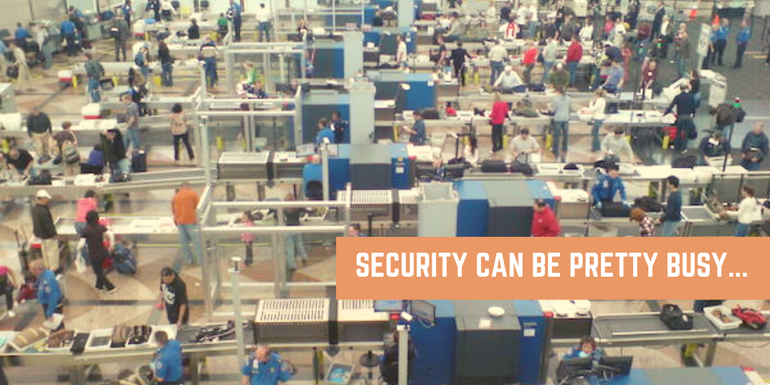
Photo credit: Danjo Paluska
In Departures
Ah, the world of Duty Free! If you have time to spare (which you should do as you should aim to check in at least 2 hours before an international flight!) make the most of it! In larger airports, you will find a lot of restaurants, bars and cafes, as well as a large duty free store and designer outlets.
If you’re feeling nervous, sit down for a coffee (or something a little stronger – a Bloody Mary perhaps?) and try to relax. You will notice that there are many screens displayed around the departures terminal – these display flight destinations, the flight numbers and when it is opened, the gate number.
Gate numbers are usually displayed 20-30 minutes before the gate closes, so keep an eye on those boards in the hour before your flight.
Top Tip: Once the gate is open, head straight there – there is no knowing how long it will take you to reach it, and it’s best to be early and wait at the gate than to be that person running through the tunnels desperately trying to reach the gate before it closes!
On the Plane
Once at the gate, your passport and boarding pass will be checked and then you will proceed to the plane. Upon boarding, show your boarding pass to the steward greeting you and they will advise where to find your seat. Tuck your documents safely away.
Ensure that your hand luggage is either under the seat in front of you or in the overhead storage – the cabin crew will advise where it should be. Take a seat, pop your seatbelt on and relax! Put any electronic devices on Airplane Mode if it has it, or switch it off completely.
Once everyone is seated, the cabin crew will go through a safety briefing with you, including information on where the exits are and what to do in an emergency – pay close attention to this as first timer! Take off can be a bit scary, so after the safety brief, maybe have something to distract you like a magazine or a talk to your row mate!
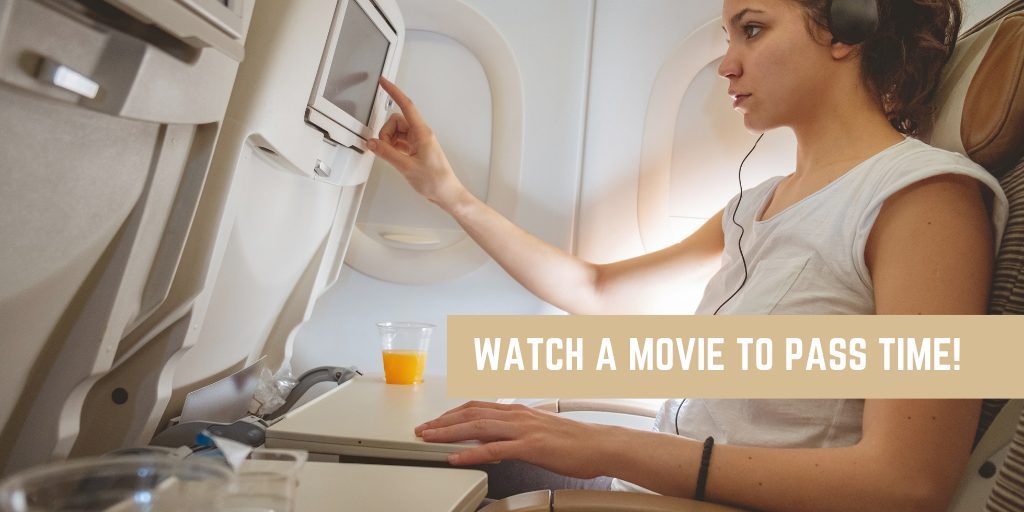
Once in the air, you can order food, drinks and even gifts from the cabin crew, or get some sleep if need be! Don’t be afraid of turbulence (when weather such as strong winds ‘rock’ the aircraft), it’s not dangerous, maybe just keep your seatbelt fastened to make you feel more secure.
Top Tip: The change in altitude on take off may cause your ears to pop, which can be painful. If you’re worried about this, purchase some boiled sweets or mints from the shops after security and have a couple while the plane takes off!
Landing
The plane landing can be a bit bumpy, but this is to be expected. When the plane does eventually grind to a halt, don’t be surprised if passengers start clapping in a bid to congratulate the Pilot for a safe landing…(I personally find this rather cringey; the Pilot can’t hear you and it’s part of the job, you know!)
Everyone will depart the plane and make their way to arrivals – this should be sign posted, but you generally just follow the throng of other passengers! Follow this all the way to customs where you will need to present your passport once again to the officials.
Once you are through, follow the signs to baggage reclaim to collect your bags if you checked any or just proceed to the exit!
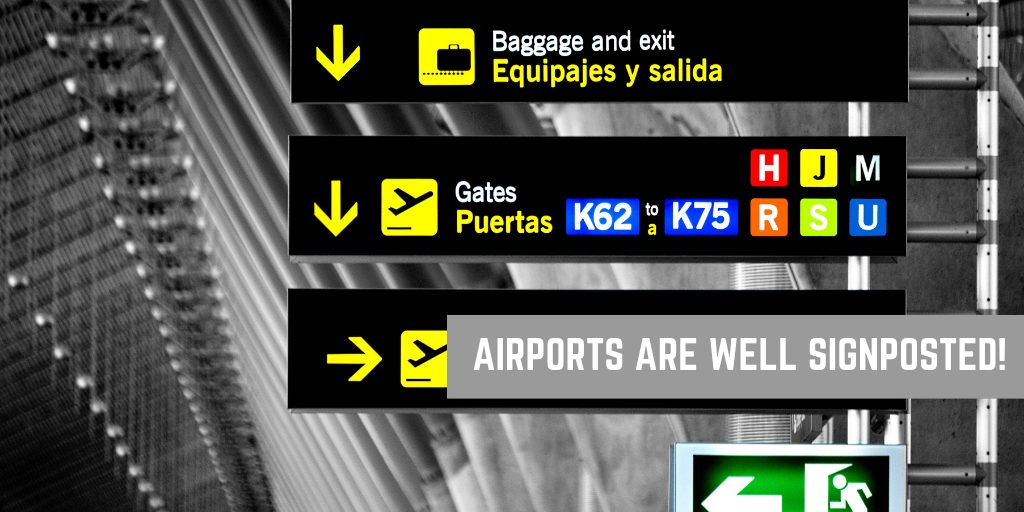
Note – If you are connecting straight onto another flight, you probably won’t need to go through customs; just follow the signs for ‘flight connections’ and join the appropriate queues for your next flight.
Top Tip: To really feel at ease prior to your journey, research the airports you will be travelling through. Get to know what facilities it has, where the information points are and where you can get a taxi from for example.
Other than that, enjoy the process! When you’ve done it once, you’ll wonder what all the fuss was about and just join in with everyone else, complaining about the queues. (You did notice that was a recurring theme in this post, didn’t you?!)